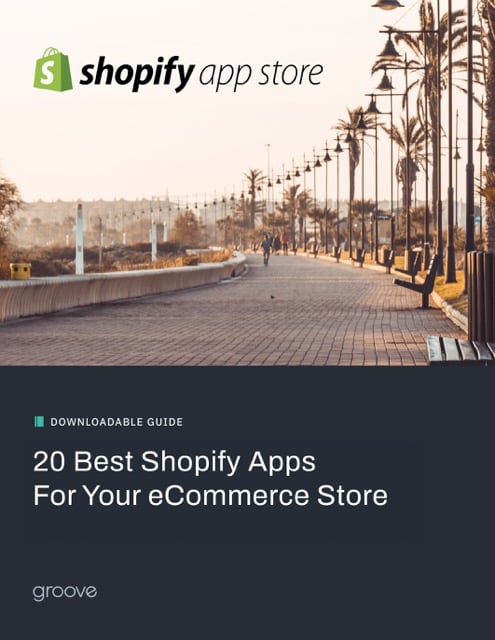Organic traffic is critical to a successful marketing strategy, but your SEO efforts alone aren’t always enough to drive results. Supplementing with eCommerce ads helps increase your site traffic, click-through rates and conversions. In this guide, we’re breaking down the two most prominent avenues for eCommerce advertising: Google and social media.
eCommerce Advertising With Google
More than 80% of desktop searches happen on Google, so it's a logical place to start when advertising for eCommerce. Google Ad Manager is a versatile platform that gives you plenty of ad options.
Google Search Ads
To create text-based eCommerce ads for Google, you'll need to bid on keywords that are relevant to your products or services. When people search for something related to those keywords, your ad will appear at the top of the search engine results page (SERP). You can select three types of Search ads:
- Responsive ads automatically adjust based on available ad spaces.
- Call ads promote a clickable phone number to drive calls to your business.
- Dynamic ads use information from your website and a short blurb you provide.
Google displays Search ads in the same way as organic search rankings, but they have a label indicating they're paid promotions.
Google Shopping Ads
Shopping ads appear at the top of the SERP when a user searches for a specific product. They include an image, as well as the name of your product, the price and your store name. These ads help to convert high-intent visitors and drive more qualified leads to your site. To create Shopping ads, you'll need to first link your Merchant Center account to Google Ads.
Google Display Ads
Display ads appear on web pages within the Google Display Network (GDN). They're image-based, and you can choose to target specific placements, audiences and topics rather than keywords. A typical Google Display ad should include:
- Company logo
- Image or visual representation of your offering
- Unique value proposition (UVP)
- Call-to-action (CTA)
The goal is to get users to stop scrolling and learn more about your brand even without clicking.
Video Ads
Video ads are similar to Display campaigns in that you have to bid for your video to appear on specific placements, such as YouTube. You can choose from a variety of ad formats, including skippable or non-skippable in-stream ads, in-feed video ads and bumper ads.
Automated Ads
Google's ad platform also leverages automation for greater efficiency. For example, Smart campaigns require you to write an ad and select keyword themes. Google then automatically displays it in different locations.
With Performance Max, you give Google a main goal along with assets and information about your products or services. The platform then uses machine learning to auto-generate ads across available placements.
Gmail Ads
If you want prospects and customers to see ads in their inboxes, you can set up a campaign through Gmail. These ads are collapsed in the "Promotions" and "Social" tabs. Users can expand them to view images, videos or embedded forms or click them to follow a link to your website or landing page.
eCommerce Ads on Social Media
Social media has become a critical channel for eCommerce ads. Knowing how to succeed on the most popular platforms gives you access to a much broader and more diverse pool of prospects.
Meta Ads Manager
With Meta Ads Manager, you can create and manage eCommerce ads for Facebook and Instagram. Meta offers multiple ad formats, including:
- Photo ads with images
- Video ads, such as how-to videos and product demos
- Carousel ads with multiple images or videos
- Collection ads that display multiple products
- Instant Experience ads that open in full-screen
Instagram also offers additional platform-specific options, such as Shopping ads. They feature product tags so people can instantly make purchases.
Snapchat and TikTok
In recent years, Snapchat and TikTok—both popular with younger users—have developed systems to support paid advertising for eCommerce.
Snapchat Ads allows you to create 10-second videos that appear between stories. Snapchat's immersive ad format uses augmented reality (AR) to allow users to interact with your ad.
TikTok Ads Manager takes a similar approach. Their ads generally work on an auction model, where you specify a bid and daily budget for your campaigns. You can also use TikTok Promote to turn organic content into paid advertisements.
Get a Handle on Paid Advertising for eCommerce
When done well, eCommerce advertising can increase conversions and build brand awareness. The key is to portray your brand’s personality throughout your eCommerce ads to attract different buyer personas and increase online sales.
Here at Groove Commerce, we augment organic traffic with a comprehensive PPC approach. From Google Shopping ads to social media advertising, our team of certified experts is here to help increase your ROI. Request a complimentary audit to see how our team can enhance your eCommerce advertising strategy.

E-BOOK
20 Best Shopify Apps For Your eCommerce Store
Explore tags:
About the author
Subscribe to the Groove Newsletter
Get the latest updates and insights straight to your inbox



